
Overland Tech and Travel
Advice from the world's
most experienced overlanders
tests, reviews, opinion, and more
Can evolution be revolution? The new Garmin GPSMap276Cx
Our director of training and GPS connoisseur Graham Jackson has remained faithful to his long-discontinued Garmin 276C, insisting that nothing better has ever been produced—until now. Here's his review of the much anticipated 276Cx. - Jonathan Hanson
Defying time is not done easily, especially in the fast-moving world of technology. Certain things defy the odds by defying time and their reasonable expiration date. Consider the Land Rover Defender for example. In its various incarnations as a 90 or a 110, later as the Defender brands of both of those, and even reaching back to the Series III, IIA, II and I, its lineage has spanned a significant portion of motorized overlanding history, yet it is still iconic and well recognized today as a highly desired overland vehicle.
When looking at electronic technology, we can’t expect timeframes to match those of automobiles, but still there are standouts. Consider the Garmin GPSmap 276C, the best overlanding navigation GPS device ever made. Introduced in 2004 as a direct descendant of the GPSmap 176, the 276C boasted a ruggedized, water-resistant frame, a gorgeous (for the time) high-resolution color display, new (again at the time) USB connectivity and support of external memory cards. Added to this was an intuitive operating system, actual buttons that could be manipulated by feel when driving or riding, even when wearing gloves, and genuinely useful functions such as a trip computer, track back (reversing a track log), tide charts (good for camping on beaches), sunset and sunrise times (good for planning sundowners and game drives), and customizable data fields that could display an appropriate level of information for genuine navigation, and Garmin had a winner. One that has not been matched since by the company, to the point that a GPSmap 276Cs can still fetch in excess of $500 on eBay. When Garmin stopped production I bought myself a back-up unit—which may have been prescient as my original 276C was stolen in Utah on the way to military training. That unit, and the back-up, have done dozens of expeditions with me, from a London-to-Cape-Town journey, to guiding in Central America, Southern Africa, Australia, and South America—always with unassuming and steady reliability while recording hundreds of thousands of track points and thousands of waypoints, providing unerring navigation confidence from dead reckoning in the Sahara to turn-by-turn guidance in Guatemala City.
Lest you think the 276C had no flaws, let’s look at some. Early firmware had issues acquiring satellites; later firmware would parse and truncate saved track logs. The memory cards pre-dated SD card technology of a reasonable physical size, so Garmin produced propriety cards in the then acceptable memory capacities of 64, 128 and 512 megabytes. Enough at the time, but with maps getting ever larger, even the 512MB cards have long outstayed their useful life, and with transfer speeds from the computer to the 276C of 12 hours or more to fill the largest cards, it seems there is some low-level USB protocol issue at work. Yet despite these shortcomings, I was unwilling to give up the 276C in favor of the more modern offerings for mobile devices. I’ve used the Hema maps app in Australia and Gaia Maps for the iPad alongside my 276C looking for a successor, but the schizophrenic multi-tasking world we demand our mobile devices live in is no place for a navigation platform. Both Hema and Gaia lose signal and crash at random times that are probably more to do with the GoPro app, mail, and WiFi than to do with them, but leave distressing if not dangerous holes in the track log. Sure, I use my iPhone and iPad for navigating around cities and finding breweries, but for crossing deserts or recording tracks to guide clients on, neither has shown the robust reliability that the 276C displayed on every outing.
Less than a year ago my good friend Nick Taylor and I discussed this whole problem over a beer (yes, at a brewery found and navigated to by iPhone). As often happens when beer is involved, our solutions got grander and grander, from starting a company that would build a 276C emulation app for mobile devices all the way to actually producing the 276 with modern technology like SD cards and support for GLONASS. This was our Garmin GPSmap 276C version of bringing the Land Rover Defender back to life. It seemed like an entirely plausible and reasonable plan, the only issue being getting the rights out of Garmin.
Well, maybe someone from Garmin was at that same brewery and overheard us, because in October Garmin released the GPSmap 276Cx. It is a complete update of the 276, retains the buttons and the interface of the original, yet incorporates just about every update we thought of and more. Needless to say, as soon as it was available I had one on the way.
Once again it has a beautiful high-resolution sunlight-readable color display, this time larger at five inches, housed in a slightly larger, but still ruggedized case. Garmin rates the water resistance to IPX7 which is great for motorcycle applications. The proprietary Garmin memory cards have been replaced with micro SD cards (hooray!) up to 32GB in size (64GB cards may be compatible, but Garmin admits to not having tested them) to complement the eight GB of internal memory. The purchase of a 276Cx includes a one-year subscription to Garmin Birds-Eye Satellite Imagery, which is like having Google Earth on your GPS and is well worth of the high memory demands it entails.
On-board power can be provided by either the rechargeable lithium-ion battery included, or three AA batteries. Line power can either come from the USB connector or from the touch contacts on the AMPS mount provided with the GPS. Compatibility for external GPS antennas is standard, though I found the on-board antenna to be very sensitive even through a Defender windscreen, and using the HotFix ability satellite acquisition was incredibly quick. After losing reception through the Eisenhower tunnel in Colorado, the 276Cx re-acquired satellites in less than a second after exiting the tunnel. Satellite capabilities have been expanded to include the Russian GLONASS constellation, a welcome addition, though no word yet on Galileo (European constellation) compatibility. All of the customizable data fields present on the old 276 are still there, with the addition of fields for external sensors as well as the new onboard barometric altimeter and electronic compass. The trip computer, sunrise and sunset and tide information are all still in their familiar places, so no capabilities have been lost on that front. A full 250 track logs can now be stored on the GPS (the 276C could only handle 14). In addition the 276Cx can interface with mobile devices running Garmin Connect via Bluetooth. This allows real-time weather information to be displayed (so long as your mobile device has a data connection), which is a fantastic feature. With WiFi capabilities now included the 276Cx can get firmware updates (needed, see below), can update live position information on the internet, and can connect to other WiFi-capable Garmin GPS units for sharing data. Data transfer for maps can still be done over USB, on modern drivers so that gigabytes of data can be transferred at realistic speeds (minutes) rather than the days required for the last 276. All great additions to what was already a leading device.
The trusty trip computer is still there, perfect for dead-reckoning navigation
However, as with all new things, there are already some issues with the 276Cx shown during my testing. Thefirst is somewhat cosmetic, but I find annoying, and involves the re-draw rate of the display. When driving, the screen does not refresh in the nice smooth flow we have come accustomed to on phones and tablets, but rather each re-draw is a bit of jerky, and, while not functionally problematic, it is unfortunate for a brand new device with an otherwise very nice display.
The firmware that came loaded was version 2.1, and I found I could not calibrate the electronic compass without it crashing software. Updating to version 2.3 of the firmware solved that issue, but there are still some others. One of the most-used functions on the old 276C was the Enter/Mark button that could be held down to drop a waypoint at the current location. I used it all the time for marking intersections, gates, restaurants, embassies, you name it. While the function exists on the 276Cx, the waypoint is, bizarrely, not created at your current location, rather at some other random-seeming location back on your track log, sometimes miles back. The only way I found to fix this was to offset the current location by a few meters using the cursor, and then drop the waypoint at that location. Certainly not the easy seamless feature it was on the original 276. Also, worryingly, I found that the track log would stop recording when I switched from the map page to any other page, such as the trip computer. When I returned to the map page the track log would resume, but my seamless track log (one of my most lauded 276 features) was broken.
New is the on-board barometric altimeter and its elevation profile page
My final gripe is the information provided for the active track log. I love the addition of elapsed time, moving average, min and max elevation etc., but I really miss the progress bar that marks how near-to-full the active track log is. Even a percentage would be welcome, but the new active track page does not show anything like that except total track points—which we can relate to the 20,000 point maximum for a saved track if we remember the 20,000 part.
I really hope these issues can be fixed in software and will just require a firmware update. On the hardware side, I’m a little leery of the touch contacts interface on the on the mounting bracket. It provides power and communication to the GPS, but I have never been a big fan of touch contacts as opposed to a proven plug and pin contact for reliable connection on overland vehicles. Only time will tell on that, and I will report back because I think the 276Cx is going to replace my 276C as the primary navigation tool on all my upcoming trips.
If Land Rover could produce as solid a contender for the new Defender as the 276Cx is for the 276C, then all would be right with the world. Small issues notwithstanding, the GPSmap 276Cx is now the best GPS on the market for overlanding; a direct replacement of the GPSmap 276C. Bravo Garmin.
Find the 276Cx here.
More good stuff from Lifeproof

I’m not as technologically averse as all my friends and family like to joke. In fact, I pioneered the switch to Mac computers in our household in 2003, and managed to learn the new operating system pretty much on my own. Digital cameras? I was all over them once the images reached publishable resolution.
However, I will admit to a fierce, abiding loathing for the telephone, or, to be specific, talking on the telephone. For me it’s always been a tool for dispensing or receiving important information as quickly as possible, not for leisurely chats. There are few phone conversations I can’t get through using artful combinations of “Yes,” and “No,” occasionally spiced with “Sure,” or “Probably not,” including calls home to my wife after two weeks incommunicado in Zambia. Any interchange that goes over 30 seconds and my fingers start tapping, my pupils dilate, and a high-pitched keening sound becomes noticeable to the person on the other end. The torture scene in Zero Dark Thirty? Calls from my mother were worse.
And that’s why—until recently—a $19 flip-phone was all the phone I needed. I’d point over the counter at the Verizon store and ask, “Can that one in the back make calls?” If the answer was, “Well, sure, but . . .”—sold.
Then telephones started doing more than annoying me, because they started doing more than ringing. First they added GPS—astonishing enough—but then came apps and Google Maps, and suddenly on road trips Roseann could tap her iPhone and find the best coffee or café in any town on our route in seconds. No more fishing down side streets, gambling on local diners, or settling for anodyne chains. The facility made road trips far more enjoyable, and probably saved enough time to add a hundred miles to the distance we could cover in a day.
There was more, such as the level and tilt app that allowed us to precisely measure the angles of slip faces on dunes in Egypt’s sand seas. And the utterly magic Star Walk, which recently informed us that the bright satellite passing over our camp in the desert at dusk was in fact the International Space Station. And the National Geographic North American Bird Guide, which includes a complete audio section on calls and songs.
So . . . sigh . . . after losing my most recent throwaway phone somewhere in Africa, I became the owner of an iPhone 5—and, not ten minutes after regaining normal heart rhythm from sticker shock, learned about accessories. I remember when the only accessory for a phone was the rubber banana-shaped thing you stuck to the handset so you could hold it with your shoulder. Not anymore.
First addition was a Lifeproof case. And a fine addition it was, considering that for the last decade I’ve been used to treating my $19 phone like . . . a $19 phone. No need to walk clear across the room to put it on my desk—a simple toss gets it there quicker. Not a good idea with a zillion-dollar miniature computer/phone/camera/GPS thing, but old habits die hard. So the shock-resistant, waterproof Lifeproof case gives me peace of mind. Furthermore, it vastly improves my grip on the phone, which when nude had an unsettling orange-seed squirtiness about it, like it could fly out of my grasp on its own. It necessitates a slightly firmer tap to use the touch-screen, but not much, and since I do not text, facile typing is unnecessary. I note that Roseann, who frequently answers business emails on her iPhone while I’m driving, doesn’t seem to have a problem.
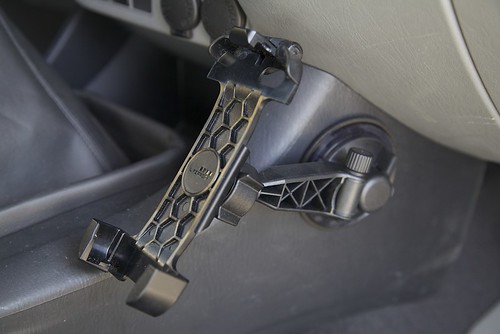
Most recently we received one of Lifeproof’s suction-cup vehicle mounts. It can attach to the windshield, but the kit includes a disk with adhesive backing you can stick elsewhere on the dash if you don’t want the unit in your line of sight of the road. We attached the disk to the passenger side of the center console, clipped in the phone, and left for a weekend trip along southern Arizona’s Camino del Diablo, which sports miles and miles of punishing washboard (or corrugations as the rest of the world knows them), especially along the Christmas Pass exit road to I-8. The iPhone on its mount remained astoundingly vibration-free throughout the trip, and Roseann had no trouble tapping in navigation commands without the need to support the unit from behind. It’s a solid system, and well worth its $40. Of course it’s sized to take the iPhone only if it’s inside a Lifeproof case, and we’d need another model for Roseann’s slightly smaller iPhone 4S (it fits but not as securely). But I suspect if they made it one-size-fits-all the rigidity would suffer, so I won’t complain.
I recall how thrilled I was with our old Garmin 276 GPS and its bulky, jiggly windshield suction mount. Just five years later we have a device that does ten times more at a fifth the weight, and a mount that renders it as steady and accessible as if it were another dashboard gauge.
Isn’t technology wonderful?
Easy trip assistance app
 by Roseann Hanson
by Roseann Hanson
How many times have you been reading a magazine or book, and come across some place you want to jot down to remember to visit, such as a landmark, a restaurant, a museum, or a trail?
In the past I either scribbled these onto a nearby post-it note or in a file on my computer. Inevitably these got lost in the shuffle of life, or are too difficult to locate when I knew I was going to be in a certain place, or I just plain forgot to bring my file with me.
Recently friends mentioned how interesting Scotty's Castle was on their overland trip through Death Valley. I started to jot it down in a notebook in the truck, but then thought, I wonder if there is an app for that?
Ever the fan (and growing) of organizing my life by iPhone, I searched the AppStore for "record places" or "remember places." One of the first to come up was the very promising My Places by VoyagerApps.com. Using your GoogleMaps account, it promises to let you see and organize your saved "places" in real time. I downloaded the free version to test it out, but unfortunately it was so annoying, I deleted it. The free version won't let you do anything without constant interruptions from pop-up notifications asking if you want to download and try other apps (presumably by VoyagerApps.com)—a different ad popped up every 30 seconds, literally, and you have to stop and click "No, thanks" every time. Then it would not let me save anything or see my Google places unless I bought the app, so I could hardly see if it worked or not. I don't mind buying apps, but this was a real stinker.
Then I tried a cool-sounding app called PintheWorld, which allows you to pin and save places of interest, give them categories (different colored pins, too), and see them when passing through a location. Sounded perfect! But unfortunately the developer uses the new iOS 6 in-house (and yes, totally lame) Apple Maps app and it is so inaccurate and picky, I could not find businesses I knew were there. The trick turned out to be that you have to type the exact, and I do mean exact, address down to the country and zip code. And then you have to manually name it and add details. Too much work. I just knew, with the power of the Internet and Apple, there had to be a solution.
Turns out it was right there all along: Google just released their brilliant Google Maps app for iPhone—pair it with your Google Maps account, and you're good to go.
(For those of you who haven't followed the little cyber drama between Google and Apple, Google was the original driver behind the superb Maps app on the iPhone but last year Apple and Google's relationship melted down, and Apple replaced Google as the data source with TomTom. My own side-by-side comparision between Google Maps and the Apple iOS 6 Maps bore out all the crazy criticism of the incredibly bad app. The famous tech geek David Pogue even called it "the most embarrassing, least usable piece of software Apple has ever unleashed." I could call up Google Maps, looking for the new Wanderlust Brewery in Flagstaff and up it pops . . . on Apple's Maps it fails to find anything, or sends me to Connecticut.)
But back to how to use the Google Maps and your Google account to save cool places to visit (after downloading Google Maps app you need to pair it with your online Maps.Google.com account).
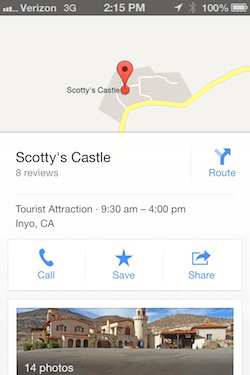 I wanted to save Scotty's Castle as a place of interest, so I just hit the search bar, typed in Scotty's Castle, and up it pops (see screen shot, right). Swipe up on the name Scotty's Castle in the bar at the bottom, and it gives you a menu of buttons—Call, Save, Share. Hit Save, and it puts it into your Google Places.
I wanted to save Scotty's Castle as a place of interest, so I just hit the search bar, typed in Scotty's Castle, and up it pops (see screen shot, right). Swipe up on the name Scotty's Castle in the bar at the bottom, and it gives you a menu of buttons—Call, Save, Share. Hit Save, and it puts it into your Google Places.
On this screen you can also browse things like photos, hours, reviews, distance from current location, and other useful information.
Then, next time I'm in Death Valley area, and I want to see if it's nearby, I fire up Google Maps app and any saved Places show up as yellow stars (see below).
I am trying to find out if the star colors can be changed, because the yellow is hard to see against the yellow roads. And they only show up at a certain zoom magnification.
The next screen-shot set below shows all the restaurants and cafes saved for Flagstaff, near Overland Expo. Click on a star and a pin pops up; click on the pin and you get the easy-to-read information popup at the bottom (swipe it up to see the details).
Ideally Google will eventually let us categorize and organize our Places, and edit them from either the app or through the Maps.Google.com. It would be nice to filter for things like restaurant, art gallery, museum, trail, or other category, to help minimize clutter if you have marked a lot of places in one area.
But otherwise it looks like it's going to be a very useful tool for travel anywhere.
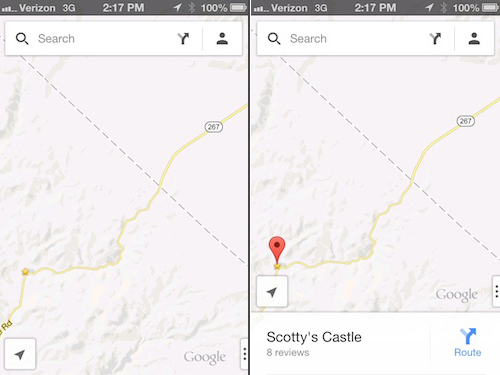
 Google Maps app is great for storing places you want to visit, like these restaurants and cafes in Flagstaff, near Overland Expo.
Google Maps app is great for storing places you want to visit, like these restaurants and cafes in Flagstaff, near Overland Expo.
Outdoor Retailer, day 1
Overland Tech and Travel arrived at Outdoor Retailer in sunny Salt Lake City this afternoon. We managed to visit a couple dozen booths before the happy hours began. Over the next three days we will be reporting on new gear as well as just cool stuff. Follow our Flickr Outdoor Retailer set as well (http://www.flickr.com/photos/conserventures/sets/72157630877676310/with/7701752420/).
Here's a preview:
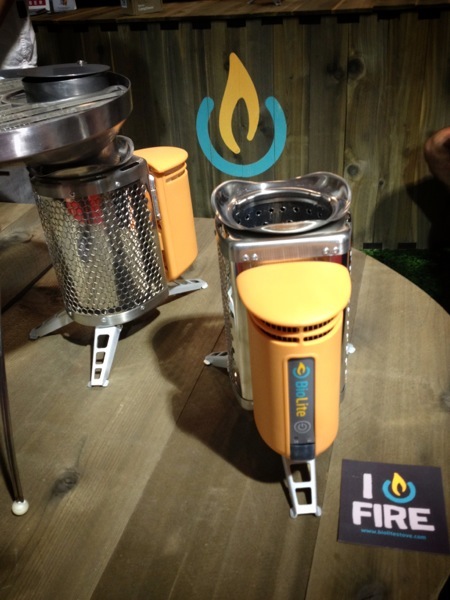
BioLite stove: burns wood (think Kelly kettle on steroids) and generates electricity for charging phones and laptops. Brilliant. A prototype heat-concentrating cooktop, below, was also on display. BioLite.com

Stealth gray KTM 950 Adventure parked in the shade outside the south entrance.
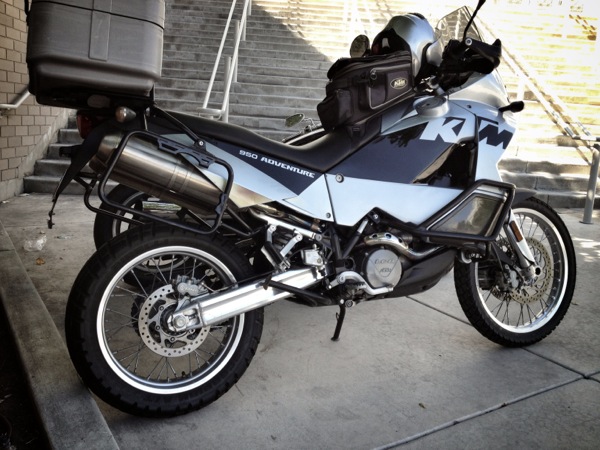
Zippo's beautifully crafted brushed "aluminum" Jeep JK Wrangler, with embossed doors, flame grille, and lighter rear rack box.

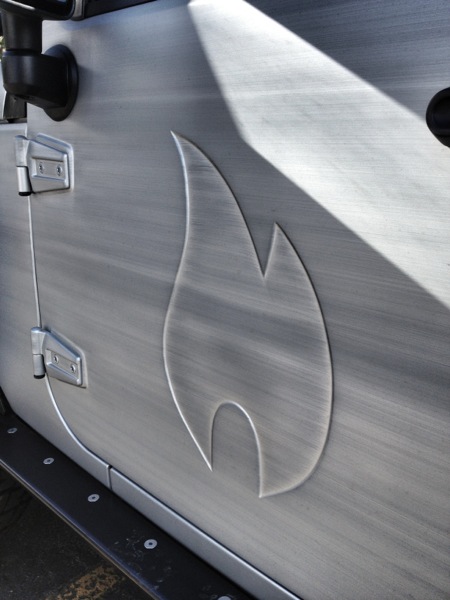

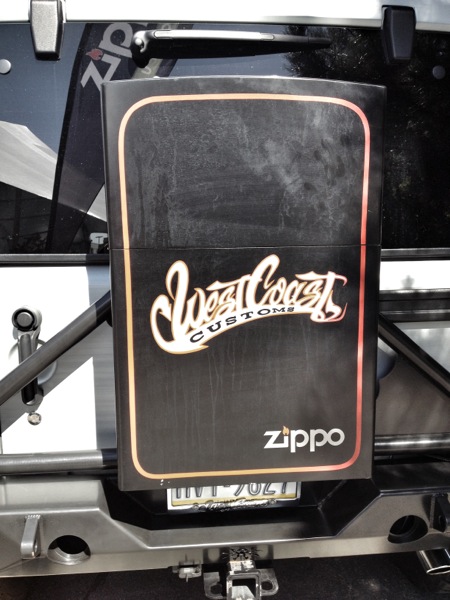
Dahon bicycles fold up into small packages, perfect for overlanding around the globe.
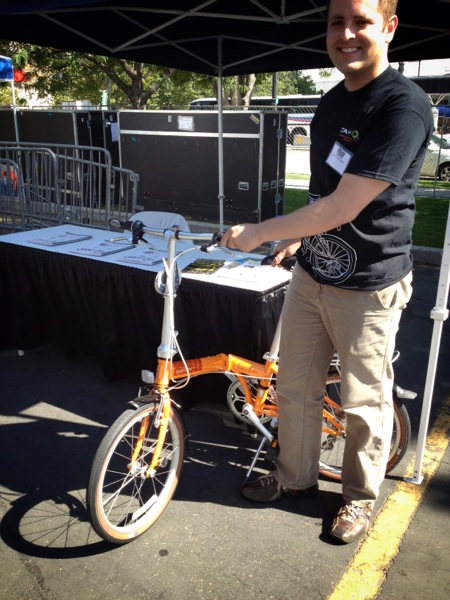
Lifeproof's incredibly slender iPhone case is nevertheless shock-resistant (two-meter drop), dustproof, and waterproof to a depth of six feet - which means your phone will now easily survive being dropped in the toilet.
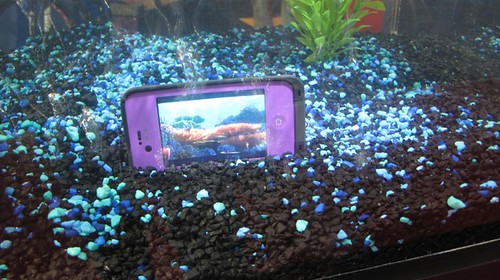
GoPro's display featured this spectacular replica of a legendary Rothmans Paris-Dakar Porsche 911 SC RS.

Hint: When using “Search,” if nothing comes up, reload the page, this usually works. Also, our “Comment” button is on strike thanks to Squarespace, which is proving to be difficult to use! Please email me with comments!
Overland Tech & Travel brings you in-depth overland equipment tests, reviews, news, travel tips, & stories from the best overlanding experts on the planet. Follow or subscribe (below) to keep up to date.
Have a question for Jonathan? Send him an email [click here].
SUBSCRIBE
CLICK HERE to subscribe to Jonathan’s email list; we send once or twice a month, usually Sunday morning for your weekend reading pleasure.
Overland Tech and Travel is curated by Jonathan Hanson, co-founder and former co-owner of the Overland Expo. Jonathan segued from a misspent youth almost directly into a misspent adulthood, cleverly sidestepping any chance of a normal career track or a secure retirement by becoming a freelance writer, working for Outside, National Geographic Adventure, and nearly two dozen other publications. He co-founded Overland Journal in 2007 and was its executive editor until 2011, when he left and sold his shares in the company. His travels encompass explorations on land and sea on six continents, by foot, bicycle, sea kayak, motorcycle, and four-wheel-drive vehicle. He has published a dozen books, several with his wife, Roseann Hanson, gaining several obscure non-cash awards along the way, and is the co-author of the fourth edition of Tom Sheppard's overlanding bible, the Vehicle-dependent Expedition Guide.



